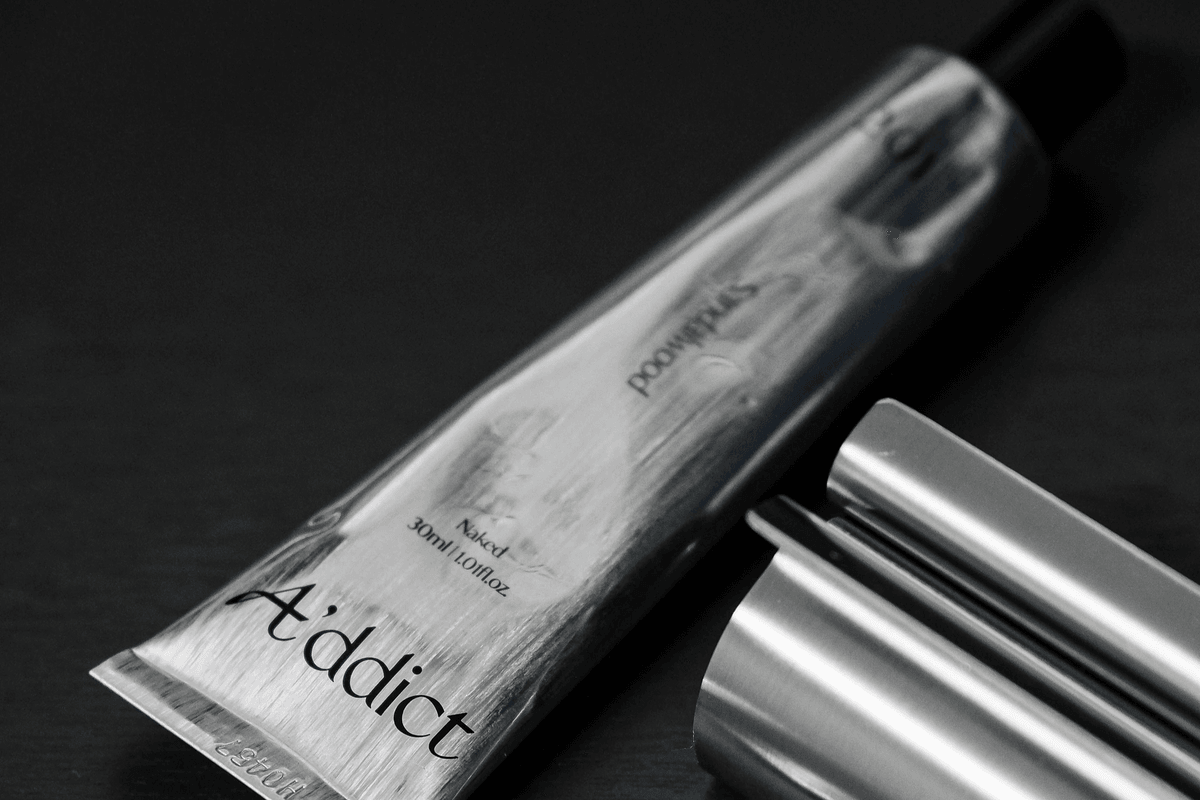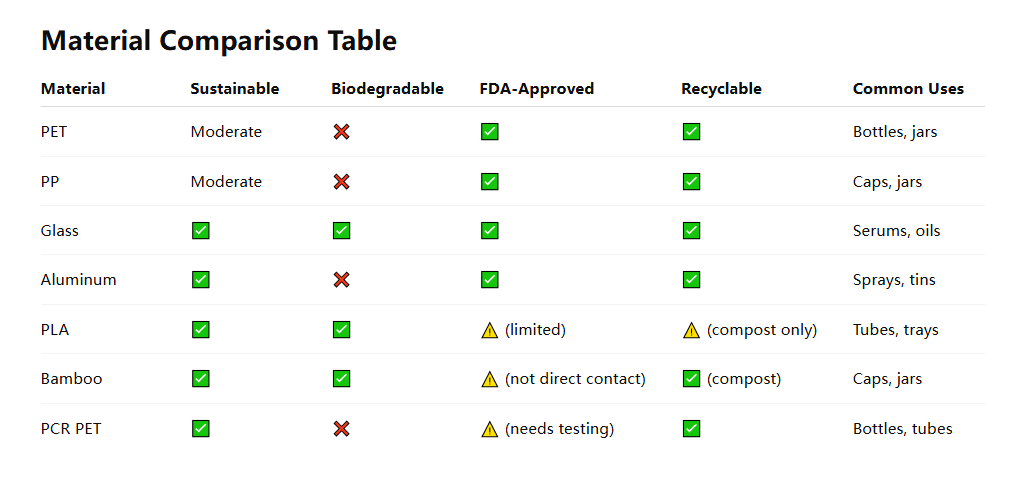Why Cosmetic Packaging Material Matters
When you pick up a lipstick, cream jar, or serum bottle, you probably focus on the product inside. But for manufacturers and procurement managers, what’s outside—the packaging—is just as critical.
Cosmetic packaging isn’t just about looks. It affects the product’s shelf life, environmental footprint, user experience, and even brand reputation. That’s why more and more companies are asking:“What materials should we use for cosmetic packaging—and which ones are eco-friendly and safe?Let’s dive into your options.

Cosmetic packaging commonly uses plastic (like PET, PP), glass, aluminum, and paperboard. Newer trends include biodegradable materials (like PLA), post-consumer recycled plastics, bamboo, and refillable packaging—all aimed at improving sustainability.
Types of Cosmetic Packaging Materials
1. Plastic (PET, PP, PE)

Plastic still dominates due to its low cost, flexibility, and light weight.
- PET (Polyethylene Terephthalate): Used for clear bottles—recyclable and relatively safe.
- PP (Polypropylene): Used for caps, jars, and cream containers—heat resistant and FDA-approved.
- PE (Polyethylene): Common in tubes—flexible and durable.
Pros: Lightweight, affordable, moldable into any shape.
Cons: Not biodegradable (unless bio-based), contributes to plastic waste.
2. Glass
A premium, non-reactive material often used in perfumes, serums, and essential oils.

Pros: Recyclable, inert (doesn’t react with contents), luxurious feel.
Cons: Heavy, breakable, higher shipping cost.
3. Aluminum & Metal
Used in aerosol sprays, tins, and high-end skin care jars.

Pros: 100% recyclable, blocks light and air, good for sensitive formulas.
Cons: Higher production cost, prone to dents.
4. Paperboard & Cardboard
Great for secondary packaging or refills—widely recyclable and increasingly popular for minimalist brands.

Pros: Eco-friendly, customizable, biodegradable.
Cons: Not waterproof or airtight (requires lining).
5. Natural & Biodegradable Materials
These are the rising stars in green packaging:
- PLA (Polylactic Acid): A bioplastic made from corn starch—compostable under industrial conditions.
- PHA (Polyhydroxyalkanoates): Bacteria-based biopolymer—marine-degradable.
- Bamboo: Used for lids, jars, and brushes—renewable and compostable.
- Cork & Wood: Premium, tactile, and biodegradable options.

Pros: Lower environmental impact, great for eco-conscious branding.
Cons: Costly, may need plastic linings for stability or hygiene.
Eco-Friendly & Sustainable Trends in Cosmetic Packaging
With global consumers demanding greener products, sustainability is no longer optional—it’s expected. Brands are responding with materials and systems that minimize environmental impact:
Post-Consumer Recycled (PCR) Plastics
Made from plastic waste collected from consumers, cleaned, and remade into packaging. PET and HDPE are most common.
Bio-based Plastics
Derived from renewable sources like sugarcane, cassava, or corn. Bio-PE (sugarcane-based polyethylene) is identical to conventional PE but with a lower carbon footprint.
Refillable & Reusable Packaging
Refill pods, jars, and bottles reduce single-use waste and enhance customer loyalty.
Safety & Regulatory Requirements
FDA-Approved Materials
For cosmetics sold in the U.S., the FDA doesn’t pre-approve packaging, but materials must be safe and not contaminate the product. Common FDA-compliant materials include:
- PP, PET, PE (when food-grade)
- Glass
- Aluminum (with proper coatings)
Non-Toxic & Allergen-Free Materials
Materials must not leach harmful substances or trigger skin reactions. That’s why phthalate-free, BPA-free, and fragrance-free packaging is gaining traction.

Related Topics and Answers
1. Which Cosmetic Packaging Materials Are Biodegradable?
PLA, PHA, bamboo, cork, and cardboard are biodegradable under the right conditions.
2. What Are Raw Materials for Cosmetic Packaging?
Raw materials include petroleum-based polymers (PP, PE), recycled plastics, sand (for glass), sugarcane (for bio-PE), bamboo, and paper pulp.
3. What Are the Requirements for Cosmetic Packaging Materials?
They must be chemically stable, non-toxic, non-reactive, leak-proof, and often comply with FDA or EU cosmetic regulations.
4. Can Packaging Affect Product Stability?
Yes. Packaging must prevent air, light, and moisture exposure to preserve product quality—especially for serums, sunscreens, and natural cosmetics.
5. What’s the Best Material for Sustainable Packaging?
Depends on your brand goals—glass for luxury, PCR plastic for cost-efficient sustainability, bamboo for natural image, or refillable systems for long-term savings.
Summary
Choosing the right cosmetic packaging material is about more than just looks. You need to think about:
- Safety (FDA-compliance, non-toxicity)
- Sustainability (recycled, biodegradable, refillable)
- Functionality (barrier properties, user experience)
- Brand fit (luxury vs eco-friendly)
Modern brands are moving away from single-use plastics and toward eco-friendly materials like PCR, PLA, bamboo, and refill systems.
Want to make your cosmetic packaging more sustainable, safe, and stylish?
Contact LTPM CHINA – We offer customizable packaging machinery and turnkey solutions for cosmetic manufacturers. From sustainable bottle fillers to eco-friendly pouch packers, we help you bring your brand values to life.